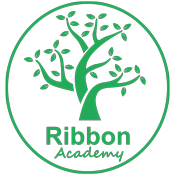Ribbon School caters for pupils from 3-11 years. At present there are 467* children on the school register and 60* children on the nursery register, totalling 527* children. Prospective parents wishing to view the school are asked to contact the school to arrange an appointment. Admission to the Nursery and School is in accordance with Durham LA policy for admissions.
*Subject to change
Nursery Admissions
Statement of Principles
1. Summary of Principles
This is a summary of principles adopted by the Academy, following the practice of the Local Authority regarding the admission of children into nursery provision within Community, Voluntary and Controlled Nursery Schools and Units. Please note:
-
1.1 Roman Catholic and Church of England Voluntary Aided Schools Although the admission of children to these schools is a matter for the Governors, almost all Aided Schools follow these criteria.
-
1.2 Nursery Aged Children with Special Educational Needs
-
The majority of children with special educational needs can be supported at any Nursery School, Nursery Unit or Early Years setting. Nursery provision is also available in certain Special Schools. Support for individual pupils is determined by the Local Education Authority.
2. Nursery Education
This is full-time or part-time education, suitable for children who have not reached compulsory school age. It is provided at Nursery Schools, Nursery Units and Early Years settings in Private, Voluntary and independent settings.
3. Attendance
Children normally attend on a part-time basis for either a morning or afternoon session, lasting 3 hours.
4. Catchment Areas
Although there are no catchment areas for places in specific Nursery Schools, Nursery Units or Primary Schools, preference is given to children whose parents live in County Durham.
5. Offer of a Place
The offer of a place in a Nursery Unit attached to an Infant or Primary School does not entitle either a place or a greater priority for a place in that school for a child’s statutory education.
6. Waiting List
Parents may place their child’s name on a waiting list, starting at the beginning of the school year (1 September to 31 August) of their child’s second birthday. Children on the waiting list, who are in their pre-school year during the Autumn Term, will be admitted first. Children who are three years old will then be admitted as places become available.
7. Emergency Referrals
In order to accommodate emergency referrals of children “in need” as defined by the Children Act 1989, Governors should keep two part-time places until the end of the Autumn Half-Term.
8. Equal Opportunities
Regardless of race, gender, religious belief or affiliation, intellectual or physical ability, social or cultural background, children have equal access to places in Nursery Schools or Nursery Units or Primary Schools.
9. Inclusion
County Durham LA recognises the clear educational, social and moral benefits to all of providing an inclusive education system which values a diverse range of skills and needs. In order to meet our overall vision we will ensure that educational provision in County Durham is flexible, appropriately resourced and able to respond to the needs of individuals. We will work to ensure that each school uses its organisation, ethos and the allocation of its resources to secure equality of opportunity, allowing all children and young people the opportunity to be fully included in the life and work of their school and their community.
10. Admission to Nurseries
This is determined by the Authorities’ published admissions criteria
11. Admissions to Primary School
Children born between 1 September 2015 and 31 August 2016 will be admitted to school in September 2020.
Admission to Community and Voluntary Controlled Infant, Junior and Primary Schools
The Academy currently uses the Local Authority as its Admissions Officer.
Oversubscription Criteria:
If more children want a place than there are places available, we will offer places according to the following criteria, strictly in order of priority:
i. Children who are ‘looked after’ or a child who was previously looked after but immediately after being looked after became subject to an adoption, residence, or special guardianship order*. A looked after child is a child who is, at the time of making an application to a school, (a) in the care of a local authority, or (b) being provided with accommodation by a local authority in the exercise of their social services functions (see the definition in section 22(1) of the Children Act 1989).
- ii. Medical Reasons: Pupils with very exceptional medical factors directly related to school placement.
- iii. Sibling Links: Pupils who have a sibling** already attending the school and who is expected to be on roll at the school at the time of admission.
- iv. Distance: Pupils who live nearest the preferred school measured by the shortest walking route***. This will be based on the parents’ address. Where the last place to be allocated would mean that a multiple birth sibling group i.e. twins, triplets or other multiple birth sibling groups, would be split, the sibling group will be given priority over other children.
* An adoption order is an order under section 46 of the Adoption and Children Act 2002. A ‘residence order’ is an order settling the arrangements to be made as to the person with whom the child is to live under section 8 of the Children Act 1989. Section 14A of the Children Act 1989 defines a ‘special guardianship order’ as an order appointing one or more individuals to be a child’s special guardian (or special guardians).
** Sibling is defined as children who live as brother or sister in the same house, including natural brothers or sisters, half brothers or sisters, adopted brothers or sisters, step brothers or sisters and children of the parent/carer’s partner. Some schools give priority to siblings of pupils attending another community and voluntary controlled school with which they have close links (for example, schools on the same site). Where this is the case, details will be published in the Local Authority’s Admissions Brochure.
*** The LA uses a Geographic Information System (GIS) to measure the shortest walking route. The shortest walking routes are measured from the nearest entrance to a house (e.g. front gate) or flats (e.g. front door of the main building) to the nearest school entrance.


